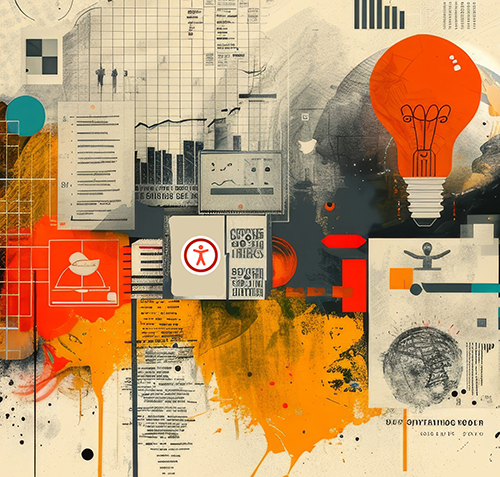Imagine a student exploring a digital archive of 19th-century letters, or a researcher diving into an interactive map of historical migration patterns. Now imagine that a student or researcher can’t fully engage because the site isn’t accessible. It’s full of images without descriptions, charts that can’t be navigated by keyboard, and videos without captions. All that effort and scholarship are suddenly limited to only some audiences. What good is a groundbreaking digital humanities project if not everyone can access it?
As these digital spaces evolve, so must our commitment to accessibility, a core principle of inclusive scholarship.
This is the challenge and the opportunity of embedding accessibility in the Digital Humanities. Making projects accessible is about ensuring that knowledge, culture, and scholarship are open to everyone, regardless of ability. Every ALT text written, every semantic structure applied, every accessible design choice expands who can participate in the conversation.
Embedding Accessibility into the Digital Humanities
When scholars and developers embed accessibility into every stage of a digital humanities project, from the first brainstorming session to design, development, and final publication, they’re using a shift-left approach that builds inclusion right into the foundation, empowering them to create projects that invite everyone into the conversation and expand their project’s reach.
The Office of Digital Accessibility at the University of Minnesota has long had one of the best resources for empowering creators to embed accessibility into any digital project, publication, or website. It is their 7 Core Accessibility Skills:
- ALT text - benefits those who are blind or visually impaired and use a screen reader.
- Proper Contrast - benefits those with low vision who use high contrast mode or screen magnification, as well as anyone viewing a screen in bright sunlight.
- Proper Heading Structure - benefits users of assistive technology such as screen readers and those who navigate digital documents and websites using only a keyboard.
- Link Text - benefits sighted, low-vision people, and those who are blind who use a screen reader. Discernible, succinct, plain language link text is easy to consume and tells the user exactly what they will find if they click the link.
- Lists - benefits everyone. Lists break walls of text into smaller, easier-to-read and comprehend ideas and concepts. Lists help reduce reader fatigue.
- Simplified Tables - benefits screen reader users. Including a header row and / or column and a table summary allows screen readers to read the data in proper order with proper headings.
- Video and Audio Captions - benefit those who are deaf or hard-of-hearing, those in loud environments, and those who need multiple ways to consume information.
They’re easy to learn and easy to implement. These truly are foundational skills that, when applied correctly, significantly improve accessibility of any digital asset.
For Digital Humanities practitioners, the message is clear: accessibility should be woven into the project from day one. Doing so strengthens your work, increases its impact, and honors the very stories that digital humanities aim to preserve.
Resources
- Digital Humanities Toolkit
- Resources for Digital Humanities: Accessibility
- Digital Humanities at Cornell University: Home
- Digital Humanities - Tools and Software, NYU
- Intro to Digital Humanities - YouTube
A human author creates the DubBlog posts. The AI tools Gemini and ChatGPT are sometimes used to brainstorm subject ideas, generate blog post outlines, and rephrase certain portions of the content. Our marketing team carefully reviews all final drafts for accuracy and authenticity. The opinions and perspectives expressed remain the sole responsibility of the human author.

